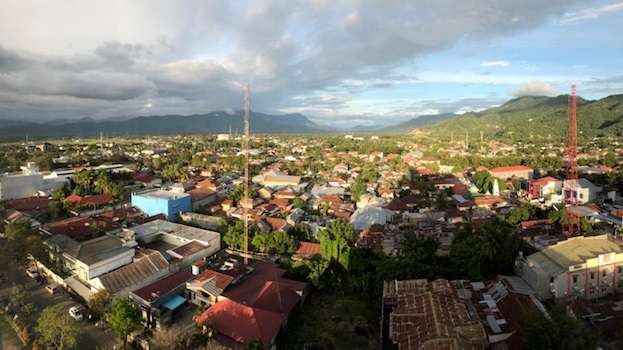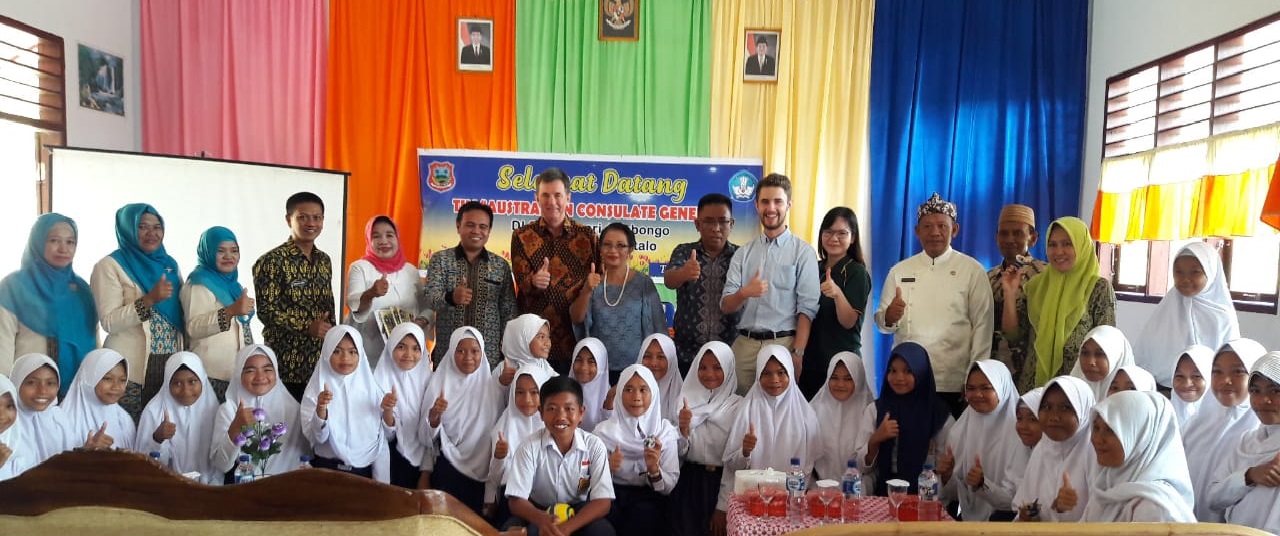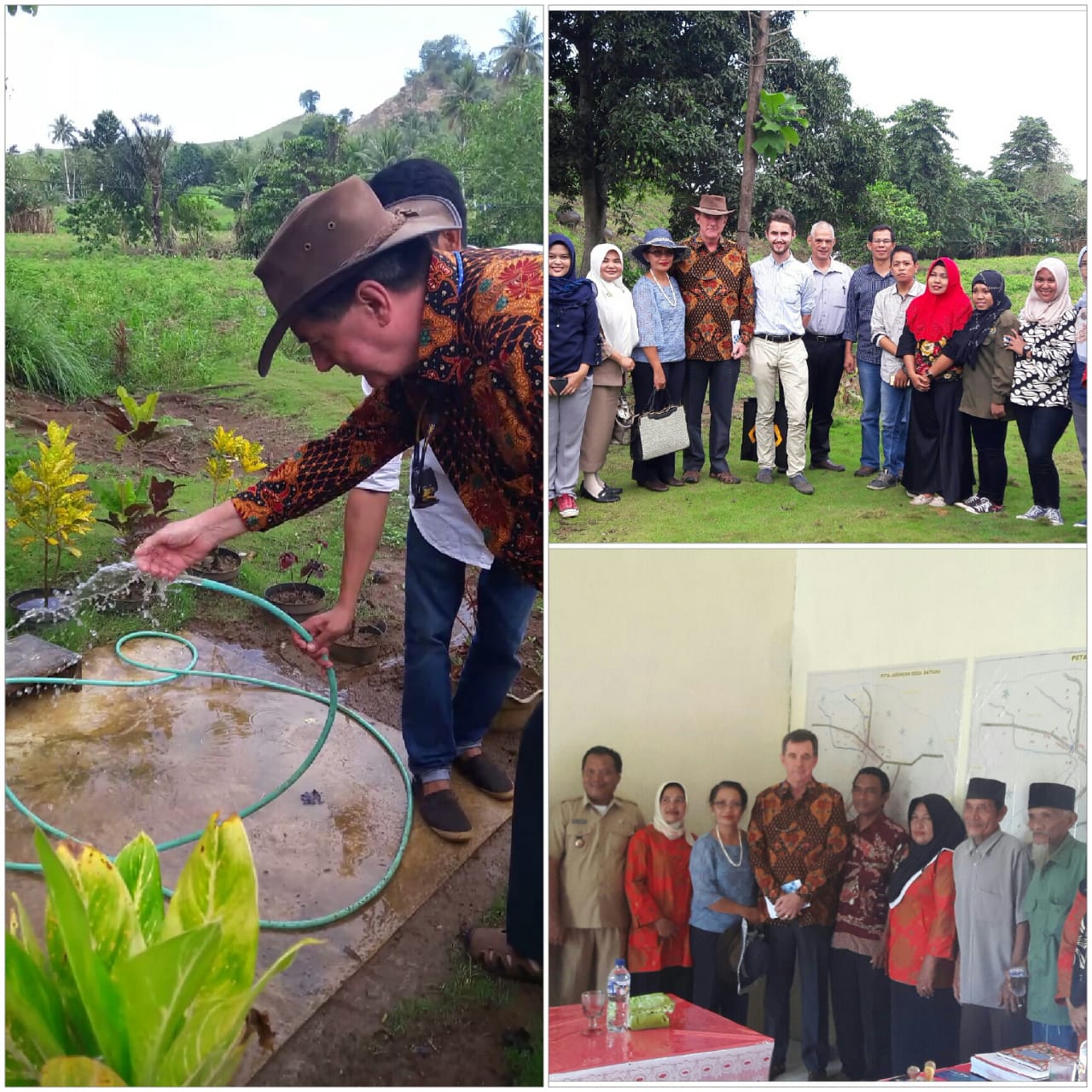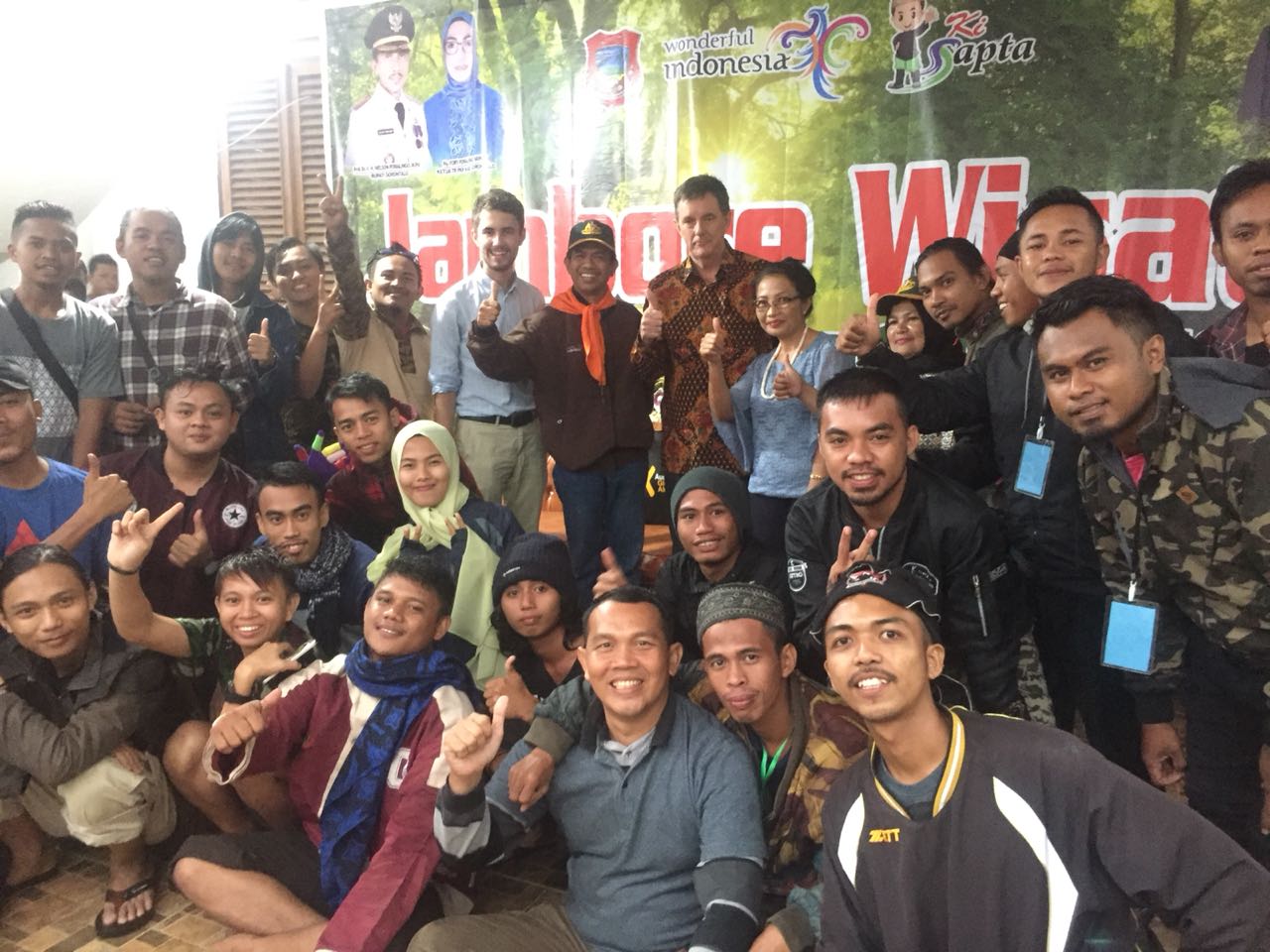June 2018
There is something about Gorontalo that is really appealing. With a population of just 1.13 million (2016) it is Indonesia’s second smallest province after West Papua. It has a beautiful landscape and a deep history: a few Portuguese forts, built around 500 years ago, dot the landscape. Everything seems rather understated, calm and relaxed. The streets are clean and the gardens are neat and tidy. Gorontalo is majority Muslim and separated from majority Christian North Sulawesi in 2000, at the beginning of the reformasi era.

The mainstay of the economy is agriculture: corn, rice, fruit, and then fisheries including seaweed cultivation. There is some mining potential, including a prospective goldmine in the west of the province that an Australian company is set to develop (www.oneasiaresources.com). Gorontalo is also a potential tourism goldmine, and tourism became a key topic of my conversations with community leaders. Being only a one hour flight from Makassar, tourism could take off in this province especially for the increasingly mobile Indonesian middle class and foreign tourists looking for a little adventure.
My program in Gorontalo began with a dinner on the Sunday evening with a group of Australian alumni. In this town of around 200,000 people there are 30 graduates from Australian universities most of whom are former Australia Awards scholars and now work as lecturers at the local universities, or as senior public servants.
First thing Monday morning we arrived at the Muhammadiyah University of Gorontalo where I delivered a presentation on tourism. I am not an academic expert on tourism, but I do have some views to share – especially on how best to develop destinations in eastern Indonesia. I have been talking a lot recently about single-use plastic water bottles, which have been around in Indonesia since the 1990s, clogging up the water-ways and ravines, rice fields and beaches. In my speech I talked about the harm they cause to beautiful tourism destinations and asked “why not serve water in jugs and glasses – like in the old days?”
Later that day the Bupati of Gorontalo Regency, Prof Dr Ir Nelson Pomalingo, hosted us to lunch in his magnificent official residence. Like many Bupati’s houses the audience hall was lavishly furnished with gold-embossed sofas and silk flower displays. A large chandelier hung in the center of the room, and plush carpet absorbed the gentle chatter of a dozen officials scattered around the room. Over lunch Pak Nelson discussed his plans for developing the tourism sector. He was please when he heard I was due to attend a “tourism jamboree” the next day at a nearby tourism destination. At this lunch, and in my later meetings with the Bupati of North Gorontalo and the Vice-Governor of Gorontalo Province, we were served water out of single-use plastic bottles. Hmmm.
We spent our third day in Gorontalo out in the field visiting Australia-related projects. First was a visit to State Junior High School No.1 in Tabongo, west of Gorontalo town and past Lake Limboto. Both the lake and the school have Australian connections. The school was built in 2016 using funds from the Australia-Indonesia Education Partnership, and is an impressive result of bilateral cooperation: this year the school achieved very good results in the computer-based national exams. Nearby Limboto Lake is famous for being the halfway resting-point for migrating birds – mostly waders - flying from Australia to northeast Asia.

In the afternoon we visited a little village in the hills of North Gorontalo Regency to learn about a community-based drinking water project. This project in Desa Datahu is part of the Republic of Indonesia’s massive PAMSIMAS initiative (www.pamsimas.org), which aims to provide clean water and sanitation to 27,000 villages across the archipelago. Part of the funding for PAMSIMAS comes from Australia via the World Bank. In Datahu village the infrastructure consisted of a tank which is filled with water from a nearby spring, then a gravity-fed pipe network which delivers water to each of the 77 households in the village. Householders have to pay a small fee to connect to the network, then they pay a monthly water service charge to the village corporation which runs and maintains the network. In the six months since the pipe network was completed 33 households have connected, and part of the World Bank and Indonesian government challenge is to convince all villagers that it is in their best interests to connect.
 We met the Datahu village community and I asked what they thought of the project. An old man with a wispy white beard was pushed forward to tell us how things had been before and after. He spoke in Gorontalonese, and someone translated for me: before the villagers had to walk one to two hours every day uphill to the spring to get water. Now with the PAMSIMAS project the water came through the pipe system from the spring directly to their homes, and it was fit for drinking. They didn’t have to walk to get their water.
We met the Datahu village community and I asked what they thought of the project. An old man with a wispy white beard was pushed forward to tell us how things had been before and after. He spoke in Gorontalonese, and someone translated for me: before the villagers had to walk one to two hours every day uphill to the spring to get water. Now with the PAMSIMAS project the water came through the pipe system from the spring directly to their homes, and it was fit for drinking. They didn’t have to walk to get their water.
Later the village headman told me the village corporation was planning to set up a small business bottling their spring water. They would sell their water to supply all of Gorontalo!
I thought, more single-use plastic bottles filling up the rivers and ravines. I suggested that the village corporation should look into selling their water to refill large “aqua gallon” (reusable plastic bottles that hold around 19 liters) so that they did not contribute to the plastic waste problem. At first the village headman looked a bit confused, but when I explained how serious the plastic waste problem was, he nodded.
We then had a long drive across Gorontalo to attend the “tourism jamboree” organised by the Gorontalo Regency Tourism Department, at the top of Dulamayo Mountain 20 kilometers to the north of Gorontalo town. This mountain is encircled by pine forest and locals hope to develop it into a popular tourist destination.
The road up the mountain was a set of concrete slabs set into the hillside, and was steep, wet and winding: it had begun to rain heavily. On our left was a dripping muddy cliff wall rising up into the misty jungle; on our right was a ravine falling down into a raging river that wound its way towards Gorontalo town then into the Tomini Gulf. After a somewhat nerve-wracking and gut-wrenching journey we arrived at the peak, 800 meters above sea level, completely enshrouded in mist and dripping rain.
We were greeted by Pak Romy from the Gorontalo Regency Tourism Service, and an enthusiastic bunch of soaked and noisy young people, waiting under a big tent. They were a mix of environmentalists, tour guides and university students.
I proceeded to talk about the importance of preserving the environment for tourism destinations like the Dulamayo Pine Forest. I said that the roads and other facilities needed to be safe for visitors. You had to remember that tourists wanted to have fun, enjoyable experiences.

I picked up one of the several plastic bottles of water on the table in front of us and asked, why do you still serve drinking water in single-use, throw-away plastic bottles? You have plenty of good water here! If you have thousands of tourists visiting every week, all using these plastic bottles, your mountain will soon collect its own mountains of empty plastic bottles. Why not go back to using jugs and drinking glasses? You can get drinking water from the spring nearby!
I think the young folk got it. Indeed, one spoke passionately in favour of preserving the environment. He said that once this forest had covered 10,000 hectares of the mountain, but many trees had been felled over the past few years and now only some 5,000 hectares were left.
Later we were treated to a meal that the village head lady had brought up the mountain, and typically in the background boomed some Indonesian love songs. I could tell these young people and their minders were looking forward to a soggy evening of story and song.
I took our leave at 5.30pm precisely, because I was concerned it would get dark before we got back to the main road. The sun set at 6.00pm, just as we came off the mountain and back into the villages we had passed on the way up. It was still raining steadily.
***
